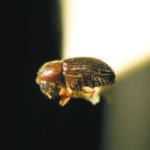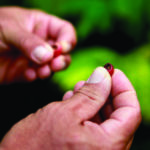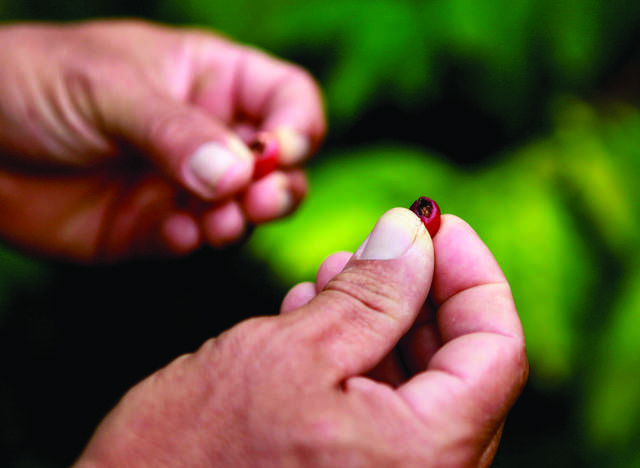State extends managerial position for CBB subsidy program


KAILUA-KONA — Hawaii’s fight against the invasive coffee berry borer takes more than a minimal financial toll on its farming community.
The state’s previous extension of a subsidy program through the Department of Agriculture (HDOA) to relieve that toll, and now its decision to continue a managerial position to oversee said program for another four years, should keep the coffee industry strong in the face of perhaps the greatest threat it’s faced this century.
“It’s a really good tool for us to be able to keep the CBB population low at a reasonable cost to our farmers,” said Suzanne Shriner, president of the Kona Coffee Farmers Association. “So it’s been a great program to date.”
The situation with CBB in the years immediately preceding the program was bleak.
Shriner said in 2012, the regional average infestation of CBB across Kona farms reached as high as 44 percent — more or less a death sentence for an operation’s annual crop yield.
“That’s pretty much a total crop loss,” Shriner explained. “That’s barely anything that’s salvageable to sell, the quality is so low.”
Six years later, however, regional infestation rates are ranging between 8-10 percent as the subsidy program is about to enter its third year of reimbursements.
“That’s the difference between financial sustainability for our farmers and going under,” Shriner said.
Educational efforts by various agricultural institutions at county, state and federal levels have all mattered, as farmers are more aware of when and how to treat for CBB than ever before.
But the program has played a significant role because the cost of Beauveria bassiana treatment, a fungus proven highly effective against CBB, can outprice many farmers.
Melanie Bondera, the new CBB pesticide subsidy program coordinator whose temporary position was just extended by House Bill 2305 for another four years, said the fungus goes for $200 per gallon in liquid form or $200 per pound in powder form. Farmers are advised to spray monthly during the planting season, if not year round.
The HDOA reimburses farmers across the state to the tune of 50 percent, which is no small amount to those who spend thousands on treatments each year.
Now two full years in, the program has hit some benchmarks. As a result payments, as well as payment caps, have been scaled back. Initially, farmers applying received a 75 percent reimbursement. Going forward, that percentage will be 50.
The program’s monetary cap was set at $600 per acre and $9,000 per farm over the first two years. The per acre cap remains the same, but the per farm cap shrinks this year to $6,000, where it will remain until the subsidy effort expires in June of 2021.
Even with the caps, most farmers reach full reimbursement status, Bondera explained.
“The folks that are not going to get their full reimbursement are the four or five 100-acre farms we have,” she said. “But what I am seeing is that even the 5-, 10- or-20 acre farms can get 50 percent of their receipts back without hitting the cap.”
While the Big Island, and Kona specifically, serve as hubs for Hawaii’s coffee production, the CBB subsidy program is actually available statewide.
Bondera said 419 applications have been filed over the program’s first two years and nearly $288,000 has been reimbursed to date.
Most farmers who participated in the first year returned in year two, along with a roughly 33 percent increase in new participants, she added.
Farms from Oahu were already utilizing the program and Bondera expects more Maui farmers will take advantage of it in the coming year. Bondera said the program is a priority for Scott Enright, HDOA chair, who will try to meet the monetary needs of whoever comes calling.
“(Enright) has said he feels like this is such a valuable program that as many people come tap into it, he will try and cover that,” she said. “But obviously, there are limits to funding.”
The cost of extending Bondera’s position are stipulated in HB 2305, which will keep her in management until June of 2022. The bill stipulates the position will be paid no more than $50,000 annually. It will exist for one year longer than the program itself, as reimbursement and other management duties will be relevant through that time.
Those interested in learning more about the subsidy program may do so at https://hdoa.hawaii.gov/pi/main/cbbsubsidy/ or by clicking here.



